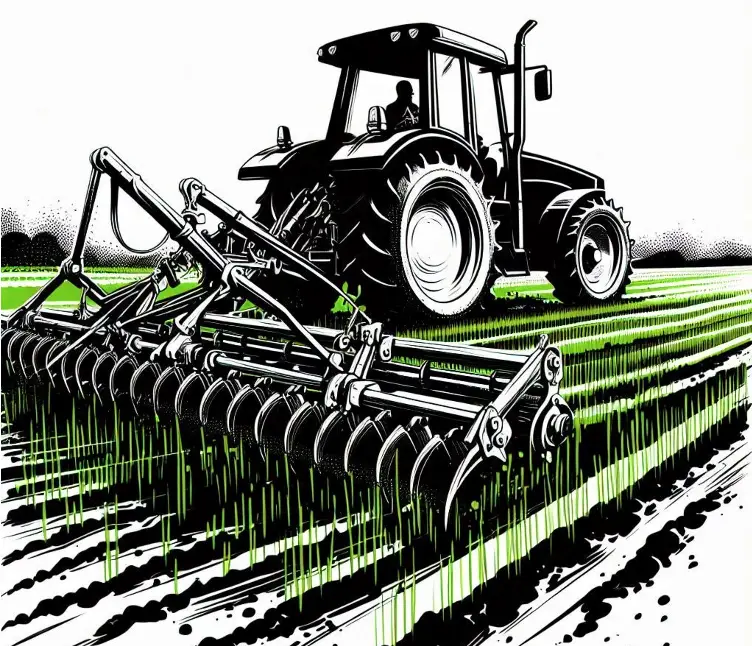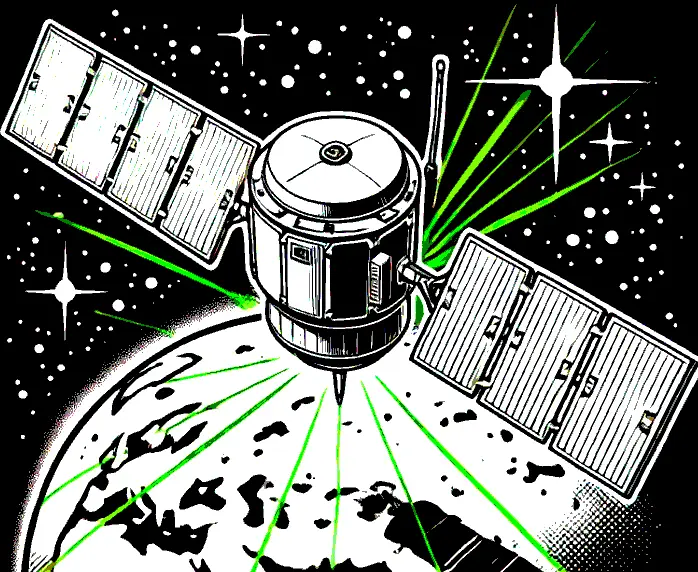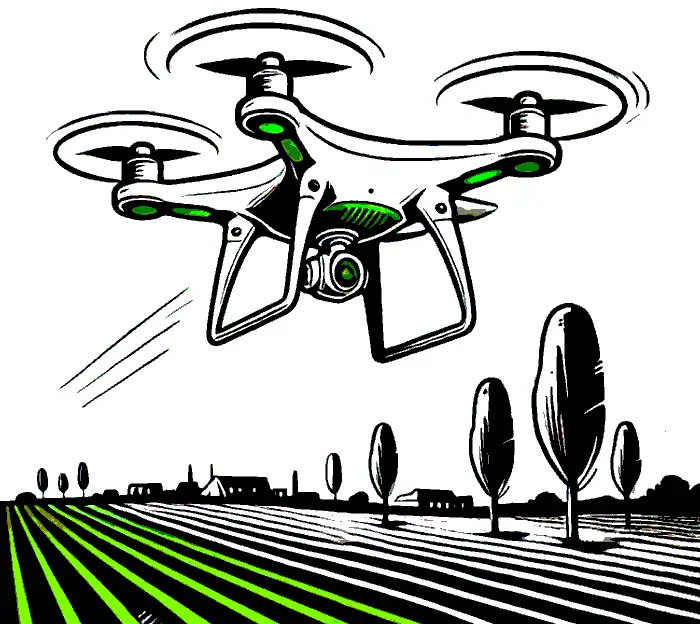Blog
-
4 min read
Jacob's Valley: GPS Attacks on Ag
Chase Swaggert, CEO
-
September 24, 2024

Jacob’s Story
It’s 4:42 PM, and Jacob Miller prepares to finish cultivating his field. This will be his third day up in a row working on his fields. Thirty six straight hours this week during season, trying to finish each field’s needed step in time to make the next one- whether that’s cultivating, planting, or digging. In times like these he’s incredibly grateful for the efficiency of his self-guided tractor.
His tractor roars to life, In the daylight with the floating cultivator attached, it does remind him of a spaceship- no crop circles here though. With a gentle whirr he sets off, over the rolling hills.
The hills roll on, the songs roll loud, and the day turns on without stopping. Studying the display in the enclosed cabin, things are looking up. The tractor with its attached cultivator automatically lines him up as it starts each row, driving perfectly down each of them in turn. Only 25% of this field left to go. Jacob daydreams about the soft bed waiting for him. 20%... 15%...10%...
Finishing his last home run shot, Jacob raises the implement and takes control of the wheel from the computer. He smiles to himself at completing the last cultivating run on this massive field before harvest, and thinks about the next steps to get the water running again now that he’s finished today.
He hops out of the tractor cabin to admire his field, but as he stands there something about the rows catches his eye. At first he can’t quite identify what’s puzzling him, but he walks closer and stoops down to examine the nearest row. Sure enough, there’s a subtle gash right down the middle of the planted row, 3 inches over from where the cultivator should have been working in each row. There’s a nick in the exposed produce underneath.
Involuntarily he gasps, quickly running across the rows to check more spots. Sure enough, to his horror the entire field has been gashed through by the cultivator, ruining all of the crop and in turn the work and money he’s put into it this late in the season.

How is this possible? How could this even happen? He wasn’t even driving at all down the row, the software was handling everything to eliminate human error, it’s even certified to be within an inch of accuracy on the crop rows for this exact reason. It was running off of data provided when they first planted and snapped the grid lines of the field, and it had worked perfectly up until this very run. In a panic he climbs back inside the cabin and pulls up the display, checking every setting and warning and error section, nothing explaining to him how or why this happened. Did someone physically take a wrench to the cultivator and shift the implement?
Reality begins to set in. He’s lost this whole field. Even worse than that, he’s lost this tractor until they can figure out what’s wrong with it, if the technicians even can. Does he just let weeds grow until he can get another cultivator? He starts doing the math in his head on how much this just cost him. Will crop insurance even cover this lost field? What about the rest of his fields he has yet to do?
Aftermath
The mystery of this destroyed field will haunt Jacob for the rest of his life. Both the insurance company and the tractor manufacturer performed forensic investigations to determine what happened.
As best they can tell, during the accident the tractor software thought it was 3 inches to the right from where it actually was. The row grid coordinates were still accurate, but for some reason the tractor had just ran them a few inches off. The engineers were unable to replicate the problem, and therefore unable to find the cause of the bug. Insurance wrote it off as user error or misconfiguration of the machine. Unknown to anyone, the actual cause is because the GPS data it relied on had been manipulated during this specific critical run on the field.
Jacob will never even know that he was the victim of a GPS spoofing attack. Advanced GPS spoofing attacks, applied tactically, leave no forensic trace. Only with the right monitoring equipment can you even detect this happening, and identify the source of the attack. In this case the source could have been a weather balloon sent from an adversary nation. It could have been a plane flying overhead. Possibly even a satellite in LEO passing over at the right time, a drone flown in the field over, or a van parked nearby with the right antenna. Jacob, the manufacturer, and the insurance company are never going to know.
The unfortunate reality is that threat actors looking to perform these types of attacks need less than $700 in equipment to lead Jacob’s entire field to ruin.

GPS Overview
The Global Positioning System (GPS) is a series of 31 satellites in orbit maintained by the US Spaceforce. The oldest of these were put into orbit in the 1970s.
GPS at the basic level allows 7 meter accuracy 95% of the time when in view of 4 satellites. Other Global Navigation System Satellites (GNSS) can be combined for higher degrees of accuracy like those needed in agriculture. These other GNSS satellite systems are maintained by the European Union, Russia and China.
GPS satellites carry atomic clocks that provide accurate time. The time information is placed in codes broadcast by the satellite so that a receiver can continuously determine the time the signal was broadcast. The signal contains data that a receiver uses to compute the locations of the satellites and to make other adjustments needed for accurate positioning. The receiver uses the time difference between the time of signal reception and the broadcast time to compute the distance, or range, from the receiver to the satellite. This process for locating is called “trilateration” (not triangulation in this case).
Notably, this data is not encrypted in any way, and contains no protections against false broadcasts, or “spoofing” (the military has their own encrypted GPS systems for this reason).
Almost all modern devices are configured to use the strongest broadcast available for GPS navigation. The satellites in orbit emit their codes at about 5 watts of power, at a distance of 12,500 miles from earth. Think of a 5 watt lightbulb in space at that distance- the light coming from it would be very small.

GPS Attacks
So, on earth GPS spoofing is extremely simple- you just need to broadcast your own codes with more than 5 watts of power, or be closer to the target, or some combination of both.
Jamming is even easier, since you only need to broadcast “noise” in the same frequency range as GPS/GNSS, with enough power to drown out the broadcasts.
In fact it’s so common, you can look at this map of detected GPS jamming globally.
Defenses and Mitigations
The first step in defending against attacks like this is raising awareness of its possibility.
Manufacturers
If you’re a manufacturer or equipment producer, be aware of the shortcomings of GPS and GNSS guided instruments. Don’t assume the operating environment is hostile-free, because it isn’t. Just look at farmers in the Ukraine for examples as to what is possible.
In addition to more redundancy and resiliency, consider adding some detection and logging capabilities to determine if the guidance system is being jammed or spoofed. Without specifically checking for this, remote troubleshooting and root cause identification is probably impossible since the problem is external.
Farmers
If you’re a farmer using sophisticated guided equipment, be vigilant for the rare situations that could be GPS jamming or spoofing. Specifically be on alert:
- If GPS systems are unable to connect for multiple hours concurrently, or multiple days in a row.
- If GPS systems provide no deviation warnings yet your tractor is clearly off course.
- If Pivot Irrigation Systems (especially corner pivots) rotate out of field or into themselves, or seem to fertilize/water irregularly or in an offset manner.
- If the reported GPS signal on your equipment is strong and normal except for in one specific area.
- If you notice unauthorized drone activity over your property during season.
Contact
If you’re either a manufacturer or a farmer and you suspect you’ve experienced an incident that involved GPS jamming or spoofing, or you want to collaborate with us on possible solutions to these problems, please reach out, we’d love to help.
